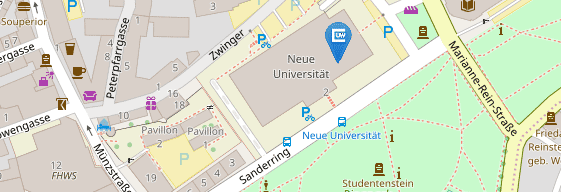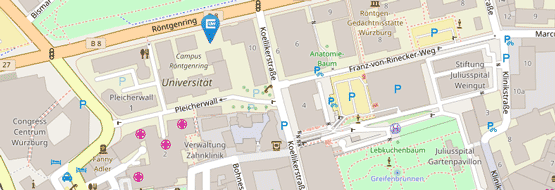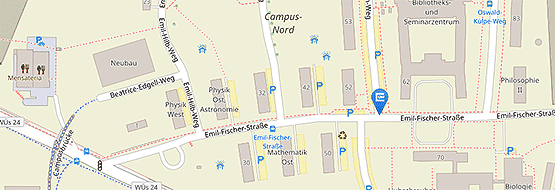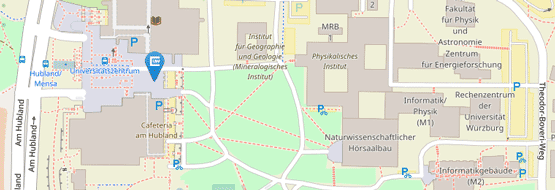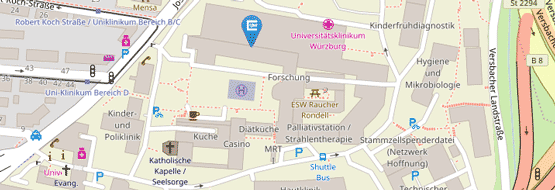Projekt A2 Senthilan/Förster
Die Rolle von Fotorezeptoren für die Synchronisation von Drosophila's Uhr auf natürliche Bedingungen
Zusammenfassung
Um Verhalten adäquat zeitlich zu steuern, müssen innere Uhren gut auf die zyklischen Umweltänderungen synchronisiert werden. Hierbei ist Licht der stärkste Zeitgeber. Die Taufliege perzeptiert Licht wird durch Rhodopsine in den Augen, in den Ozellen und einem extraretinalen Auge, sowie durch das Blaulichtpigment Cryptochrom (CRY) in den Uhrneuronen selbst. Alle diese Photorezeptoren tragen zur Synchronisation der inneren Uhr auf unterschiedliche Weise bei. Wie dies geschieht, soll hier untersucht werden. Dabei liegt ein besonderes Augenmerk auf der Synchronisation der Uhr durch spektrale Veränderungen des Lichts während der Dämmerung. Weiterhin soll untersucht werden wie sich die Ausstattung mit Photopigmenten bei der Anpassung an Habitate mit unterschiedlicher Beleuchtungsstärke, -Qualität oder -Dauer verändert hat und welche Bedeutung hierbei ein neu entdecktes Rhodopsin (Rh7) spielt.
Publikationen
-
The Neuropeptide PDF Is Crucial for Delaying the Phase of Drosophila’s Evening Neurons Under Long Zeitgeber Periods. . In J Biol Rhythms, 36(5), pp. 442–460. 2021.
-
The Pigment-Dispersing Factor neuronal network systematically grows in developing honey bees. . In Journal of Comparative Neurology, 530(9), pp. 1321–1340. 2021.
- [ URL ]
-
Endocrine signals fine-tune daily activity patterns in Drosophila. . In Curr Biol, 31(18), pp. 4076–4087.e5. 2021.
-
A Functional Clock Within the Main Morning and Evening Neurons of D. melanogaster Is Not Sufficient for Wild-Type Locomotor Activity Under Changing Day Length. . In Frontiers in Physiology, 11, p. 229. 2020.
- [ URL ]
-
Loss of function in the Drosophila clock gene period results in altered intermediary lipid metabolism and increased susceptibility to starvation. . In Cellular and Molecular Life Sciences, 77, pp. 4939–4956. 2020.
- [ URL ]
-
Single-cell resolution long-term luciferase imaging in cultivated Drosophila brains.. . 2020.
- [ URL ]
-
Post-embryonic Development of the Circadian Clock Seems to Correlate With Social Life Style in Bees. . In Frontiers in Cell and Developmental Biology, 8, p. 1325. 2020.
- [ URL ]
-
A distinct visual pathway mediates high light intensity adaptation of the circadian clock in Drosophila. . In Journal of Neuroscience, 39(9), pp. 1621–1630. 2019.
- [ URL ]
-
The Circadian Clock Improves Fitness in the Fruit Fly, Drosophila melanogaster. . In Front Physiol, 10, p. 1374. 2019.
-
Light-mediated circuit switching in the Drosophila neuronal clock network. . In Current Biology, 29(19), pp. 3266–3276.e3. 2019.
- [ URL ]
-
Peptidergic signaling from clock neurons regulates reproductive dormancy in Drosophila melanogaster. . In PLoS Genet, 15(6), p. e1008158. 2019.
-
Life at High Latitudes Does Not Require Circadian Behavioral Rhythmicity under Constant Darkness. . In Current Biology, 29(22), pp. 3928–3936.e3. 2019.
- [ URL ]
-
Role of Rhodopsins as Circadian Photoreceptors in the Drosophila melanogaster. . In Biology, 8(1), p. 6. 2019.
- [ URL ]
-
Closely Related Fruit Fly Species Living at Different Latitudes Diverge in Their Circadian Clock Anatomy and Rhythmic Behavior. . In J Biol Rhythms, 33(6), pp. 602–613. 2018.
-
The Circadian Clock of the Ant Camponotus floridanus Is Localized in Dorsal and Lateral Neurons of the Brain. . In Journal of biological rhythms, 33(3), pp. 255–271. 2018.
- [ URL ]
-
The characterization of the circadian clock in the olive fly Bactrocera oleae (Diptera: Tephritidae) reveals a Drosophila-like organization. . In Sci Reports, 8(1), p. 816. 2018.
- [ URL ]
-
Pigment-Dispersing Factor-expressing neurons convey circadian information in the honey bee brain. . In Open Biology, 8(1), p. 170224. 2018.
- [ URL ]
-
Flies as models for circadian clock adaptation to environmental challenges. . In European Journal of Neuroscience, 51(1), pp. 116–181. 2018.
- [ URL ]
-
Drosophila RSK Influences the Pace of the Circadian Clock by Negative Regulation of Protein Kinase Shaggy Activity. . In Frontiers in Molecular Neuroscience, 11, p. 122. 2018.
- [ URL ]
-
The CCHamide1 neuropeptide expressed in the anterior dorsal neuron 1 conveys a circadian signal to the ventral lateral neurons in Drosophila melanogaster. . In Frontiers in physiology, 9, p. 1276. 2018.
- [ URL ]
-
The Drosophila microbiome has a limited influence on sleep, activity, and courtship behaviors. . In Scientific reports, 8(1), p. 10646. 2018.
- [ URL ]
-
Cryptochrome interacts with actin and enhances eye-mediated light sensitivity of the circadian clock in Drosophila melanogaster. . In Frontiers in Molecular Neuroscience, 11, p. 238. 2018.
- [ URL ]
-
A damping circadian clock drives weak oscillations in metabolism and locomotor activity of aphids (Acyrthosiphon pisum). . In Sci Rep, 7(1), pp. 14906–14906. 2017.
- [ URL ]
-
Neuronal circadian clock protein oscillations are similar in behaviourally rhythmic forager honeybees and in arrhythmic nurses. . In Open Biology, 7(6), p. 170047. 2017.
- [ URL ]
-
A new Rhodopsin influences light-dependent daily activity patterns of fruit flies. . In Journal of biological rhythms, 32(5), pp. 406–422. 2017.
- [ URL ]
-
Drosophila Rhodopsin 7 can partially replace the structural role of Rhodopsin 1, but not its physiological function. . In Journal of Comparative Physiology A, pp. 1–11. 2017.
- [ URL ]
-
Pea aphids (Hemiptera: Aphididae) have diurnal rhythms when raised independently of a host plant. . In J Insect Sci, 16(1), p. 31. 2016.
- [ URL ]
-
Rhodopsin 7--The unusual Rhodopsin in Drosophila. . In PeerJ, 4, p. e2427. 2016.
- [ URL ]
-
A neural network underlying circadian entrainment and photoperiodic adjustment of sleep and activity in Drosophila. . In J Neurosci, 36(35), pp. 9084–9096. 2016.
- [ URL ]
-
A new device for monitoring individual activity rhythms of honey bees reveals critical effects of the social environment on behavior. . In J Comp Physiol A, 202(8), pp. 555–565. 2016.
- [ URL ]
-
Circadian light-input pathways in Drosophila. . In Commun Integr Biol, 9(1), p. e1102805. 2016.
- [ URL ]
-
Chapter Five - Photic Entrainment in Drosophila Assessed by Locomotor Activity Recordings. . In Circadian Rhythms and Biological Clocks, Part B, Vol. 552, A. Sehgal (ed.), pp. 105–123. 2015.
- [ URL ]
-
The MAP kinase p38 is part of Drosophila melanogaster’s circadian clock. . In PLoS genetics, 10(8), p. e1004565. 2014.
- [ URL ]
-
Identification and structural characterization of interneurons of the Drosophila brain by monoclonal antibodies of the Würzburg Hybridoma Library. . In PLOS ONE, 8(9), pp. 1–9. 2013.
- [ URL ]
-
Integrating Formal UML Designs and HCI Patterns with Spiral SDLC in DroLIGHT Implementation. . In Recent Patents on Computer Science, 6(2), pp. 85–98. 2013.
- [ URL ]
Kontakt/Contact
Prof. Dr. Charlotte Förster
Lehrstuhl Neurobiologie und Genetik
Biozentrum der Universität Würzburg
Am Hubland
D-97074 Würzburg
Phone: +49 931 31-84450 (Sekretariat/Office)
Mail: sfb1047@uni-wuerzburg.de

